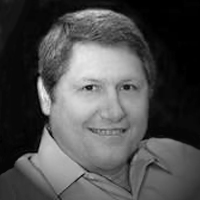Question
What options are available to the audiologist for sterilizing equipment? What equipment needs to be sterilized?
Answer
Sterilization (Killing 100% of the germs 100% of the time) is indicated when an object is contaminated with blood or other bodily fluid such as mucous in ear drainage. It is also indicated with ''critical'' instruments, that is, those that can break or abrade the skin. A stainless steel wax curette would be considered ''critical''. A speculum or impression syringe would not. All other items can be disinfected rather than sterilized. The preferred method of sterilization is heat and pressure in an autoclave. This is often impractical in audiology as the heat melts plastic and the machines are costly. Cold sterilization can be accomplished via 2 chemicals. The first, glutaraldehyde (2% concentration or greater) is an effective sterilant when something soaks in it for a minimum of 10 hours. Brands such as Wavicide and Cidex contain glutaraldehyde. Glutaraldehyde is toxic and the fumes can be irritating. Contact with skin must be avoided and the fumes should be contained in a tray and used in a well ventilated area. The other cold sterilant is 7.5% hydrogen peroxide (H202), brand name Sporox. Sporox was recently approved by EPA and has some advantages over glutaraldehyde such as it is not as toxic and the fumes present no danger. Sporox is a 6-hour soak for sterilization. Keep in mind that disposing of an object that is contaminated with blood or bodily fluids is an alternative to sterilizing.
BIO:
Mr. Robert J. Kemp is founder and Chief Executive Officer of Oaktree Products, Inc. in Chesterfield, MO. Oaktree Products, Inc., is an established supplier of Audiology/hearing aid supplies and the leading information source on infection control to the hearing healthcare community. Bob earned his B.S. in Microbiology and a Master's of Business Administration from
Rockhurst College in Kansas City, MO. Prior to founding Oaktree Products, he spent 12 years in sales and marketing management in the pharmaceutical industry. Mr. Kemp is a nationally recognized expert in the area of infection control and its implications in hearing healthcare environments. He is an adjunct instructor for several distance learning AuD programs in the area of infection control.
REFERENCES:
See book titled: Infection Control for the Professions of Audiology & Speech
Language Pathology. Iles Publications, Olathe, KS, 1996. Available through Oaktree Products, Inc. (800) 347-1960

